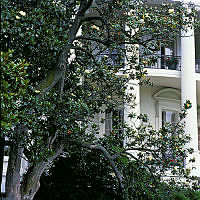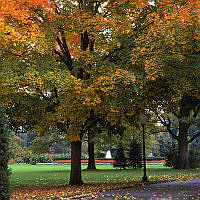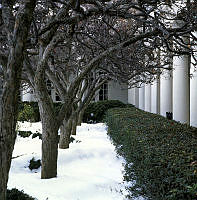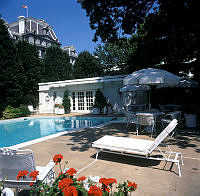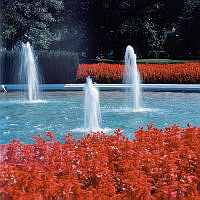Stone Swag Surrounding the North Entrance, White House Collection
This black and white photograph by Erik Kvalsvik shows the north entrance during a maintenance project. The North Door surround, carved in high relief around the window, is surmounted by a detailed swag carved into two giant stones, a total of twelve feet in length. The carving above the door includes roses and a stylized garland of American white oak leaves and acorns, a theme repeated in the transom, along with more conventional acanthus leaves, griffins, and classical flowers. The photograph was taken during Ronald Reagan's presidency (1981-1989).



